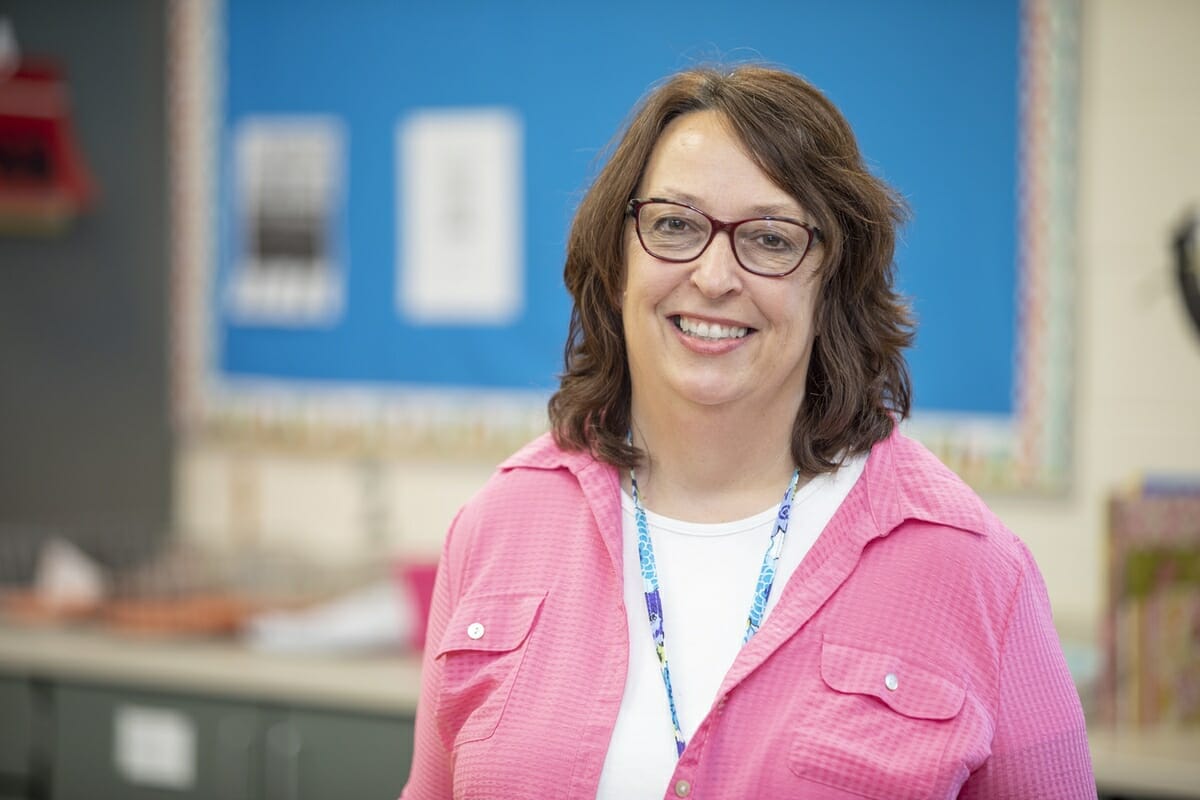Beaufort High teacher beats invasive breast cancer thanks to 3-D mammogram
Story by Marie McAden • Photos by Paul Nurnberg
Five kids and a demanding job as a Beaufort High School teacher left Wendy Lacombe with little time to care for herself.
“I was busy and I felt great, so I became cavalier about my health,” the Lady’s Island resident said. “It had been so long since I had a mammogram, they couldn’t find a record of it.”
After her husband went in for a routine check-up last summer, Lacombe decided to follow his lead and made an appointment with her gynecologist. She followed up with a mammogram in October at Beaufort Memorial’s Breast Health Center.
The technician recommended she have a 3-D mammogram, an advancement in imaging technology clinically proven to increase cancer detection. Because Lacombe has dense breast tissue, it’s more difficult for radiologists to detect cancer using conventional mammograms. With 3-D imaging, fine details are more clearly visible, allowing doctors to pinpoint abnormalities that might not be visible on a standard mammogram.

After initially balking at paying an extra $125 for the screening, Lacombe relented.
The X-ray showed an abnormality.
“If I had not done the 3-D mammogram, they never would have found it,” Lacombe said. “That was my first blessing.”
The 3-D mammogram was followed by a diagnostic mammogram and ultrasound. That same day Lacombe met with Beaufort Memorial general surgeon Dr. Perry Burrus. He told her the results of the screenings were inconclusive and recommended a needle biopsy.
A few days later, she returned to the hospital to have the procedure. The tissue sample showed Lacombe had lobular carcinoma in situ, an uncommon condition in which abnormal cells form in the milk glands or lobules of the breast.
“He could have left it alone and just monitored it closely, but he wasn’t comfortable doing that,” Lacombe recalled. “That was my second blessing.”
A week later, Dr. Burrus performed surgery to remove the lump. A biopsy of the tissue revealed it was an invasive cancer.
“I was terrified,” the 55-year-old Lacombe said. “How was I going to handle my family and classes? I didn’t want to let my students down.”
Beaufort Memorial certified breast care navigator Dana Wilson relieved much of her anxiety.
“Thank God for Dana,” Lacombe said. “She was my advocate. She scheduled my appointments so I could continue to teach. That’s what was most important to me.”
Wilson accompanied Lacombe when she met with Dr. Burrus, her medical oncologist, and her radiation oncologist. After each visit, she would explain the treatment plan in terms the English teacher could understand.
“A diagnosis of breast cancer can be overwhelming to patients,” Wilson said. “They get so much information, they can’t process it all. I’m there to answer questions and help guide them through the months of treatment that lie ahead.”
The treatment plan started with a partial mastectomy. Along with the cancerous tissue, Dr. Burrus removed three lymph nodes to determine if the cancer had spread.
“The trend is to perform less and less surgery on lymph nodes to reduce the risk of lymphedema, a very painful and often lifelong problem,” Burrus said. “Fortunately, the biopsy of the lymph nodes came back negative.”
An Oncotype genetic test was performed on the tumor to determine the effectiveness of chemotherapy on her specific cancer. The test predicted a low response, sparing Lacombe of the side effects of the powerful drugs.
However, to kill any microscopic cancer cells that could be present in her breast, Lacombe would need 35 treatments of radiation therapy.
During the entire seven weeks of treatment, friends and the parents of her students provided Lacombe with meals every week night.
When she completed her radiation this past January, she was cancer-free. Determined to stay healthy, she began exercising fives day a week at Beaufort Memorial’s LifeFit Wellness Center and has lost 20 pounds.
“I was given a gift and I’m not going to squander it,” Lacombe said. “Cancer made me realize what’s important in my life.”







